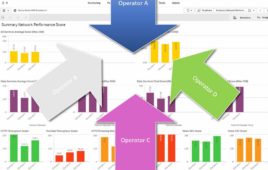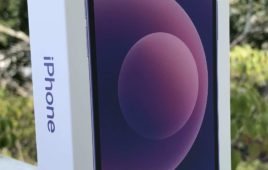Cricket
Communications parent Leap Wireless International switched on its first LTE
service in Tucson, Ariz. today, marking the start of what the company described
as a “multi-year transition” to the next generation mobile broadband
technology.
The
service will eventually cover about 90 percent of Cricket’s Tucson market, and
will be expanded to nearby Nogales, Ariz. sometime next year.
Leap
said in October it would launch its first LTE trial markets before the end of
this year. Its LTE service is slated to cover 25 million people by the end of
2012, eventually blanketing about two-thirds of its network footprint. The
company has not provided further details about its planned market launches.
Leap
did not release specifics about the new service’s upload and download rates,
but said its LTE data speeds “ranged from 5 to 10 times faster than current 3G
data speeds.” Verizon Wireless’ LTE network averages 5 to 12 Mbps on the
downlink and 2 to 5 Mbps on the uplink.
So
far, Leap is only offering one device compatible with the service, the
dual-mode Huawei Boltz USB modem. The modem runs on Leap’s LTE and CDMA
EV-DO networks and is expected to retail for about $150. Customers can pick
from two monthly rates, a $50 plan that offers 5 GB of data with download speeds
of up to 3 Mbps and a $60 plan that also offers 5 GB of data, but with faster
download speeds of up to 6 Mbps.
The
debut of the new high-speed wireless service will help Cricket better compete
against prepaid providers MetroPCS and T-Mobile USA, who both offer services
marketed as 4G through their respective LTE and HSPA+ networks. The speeds of
MetroPCS’ LTE service are somewhat restricted by its limited spectrum holdings.
As
a prepaid provider, Leap must keep a tight rein on spending to avoid raising
prices at its Cricket subsidiary. Its capital expenditures are expected to be
between $425 million and $475 million this year on the cost of its LTE build
and ongoing maintenance of its 3G service.
Leap
President and CEO Doug Hutcheson said in a statement that the company would
roll out its new LTE netowrk “in a thoughtful manner and on a timeline
that is appropriate for our value conscious customers.”
Leap
made plans last spring to use LightSquared’s proposed wholesale LTE network for roaming. That strategy is likely now on
the backburner, since the launch of LightSquared’s network has been delayed
after it was found to cause widespread blackouts in GPS service




